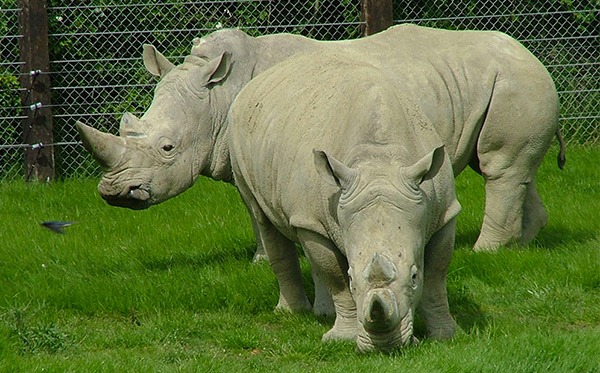Zimba and Balu leaving

At the end of April we said goodbye to our two male white rhinos, Balu (6 years old) and Zimba (8 years old). Both rhinos came to us when they were approximately 2-3 years old which is the age they would leave their mothers in the wild. They were too young to be paired with a female at this age therefore Flamingo Land offered them a home and cared for them until they were mature enough to be moved on to another zoo where they can be part of a breeding program. Breeding programs are a crucial part of the conservation of a species.
Balu has moved to a zoo in the south of France and Zimba has gone to Africa Alive in Suffolk. In replacement we have 2 new male white rhinos, Mobaso from Colchester zoo and Bruce from Blair Drummond safari park. Both males are 2 years old and Flamingo Land will be caring for these rhinos until they are also mature enough to be paired with females.
The white rhino (Ceratotherium simum) is the largest out of the two African species of rhino. It can weigh over 2 tonnes and has a large head, holding it low to the ground to feed. They are grazers and feed on large quantities of grasses using their wide, square lips to pull up the grass from the ground. They received the ‘white’ name due to a mistranslation of the Afrikaans word ‘wyd’ meaning ‘wide’ which was used to describe their broad lips. Their African cousins, the black rhino (Diceros bicornis), is much smaller and has a pointed lip which is used for grasping leaves off plants, therefore they are known as browsers.
In the wild all species of rhino face the main threat of poaching for their horns along with habitat loss and human/wildlife conflict. Unfortunately the demand for rhino horn has escalated in recent years and has become a lot more valuable than gold. Rhino horn is used in traditional Asian medicine where it is ground down to powder and is thought to help with headaches and fevers. However, it has no proven medicinal benefits! Also, rhino horn is crafted into ornaments and used as a status symbol to show wealth in some Asian countries.
A rhino’s horn is a vital part of its body as they use their horns for defence against predators and for dominance and threat displays against other rhinos. Their horn is made from keratin which is the same substance that makes up our finger nails and hair. It is constantly growing therefore the rhinos keep it in shape by rubbing up against objects. If broken, it will grow back.
By Michelle Dennis
Education Assistant


